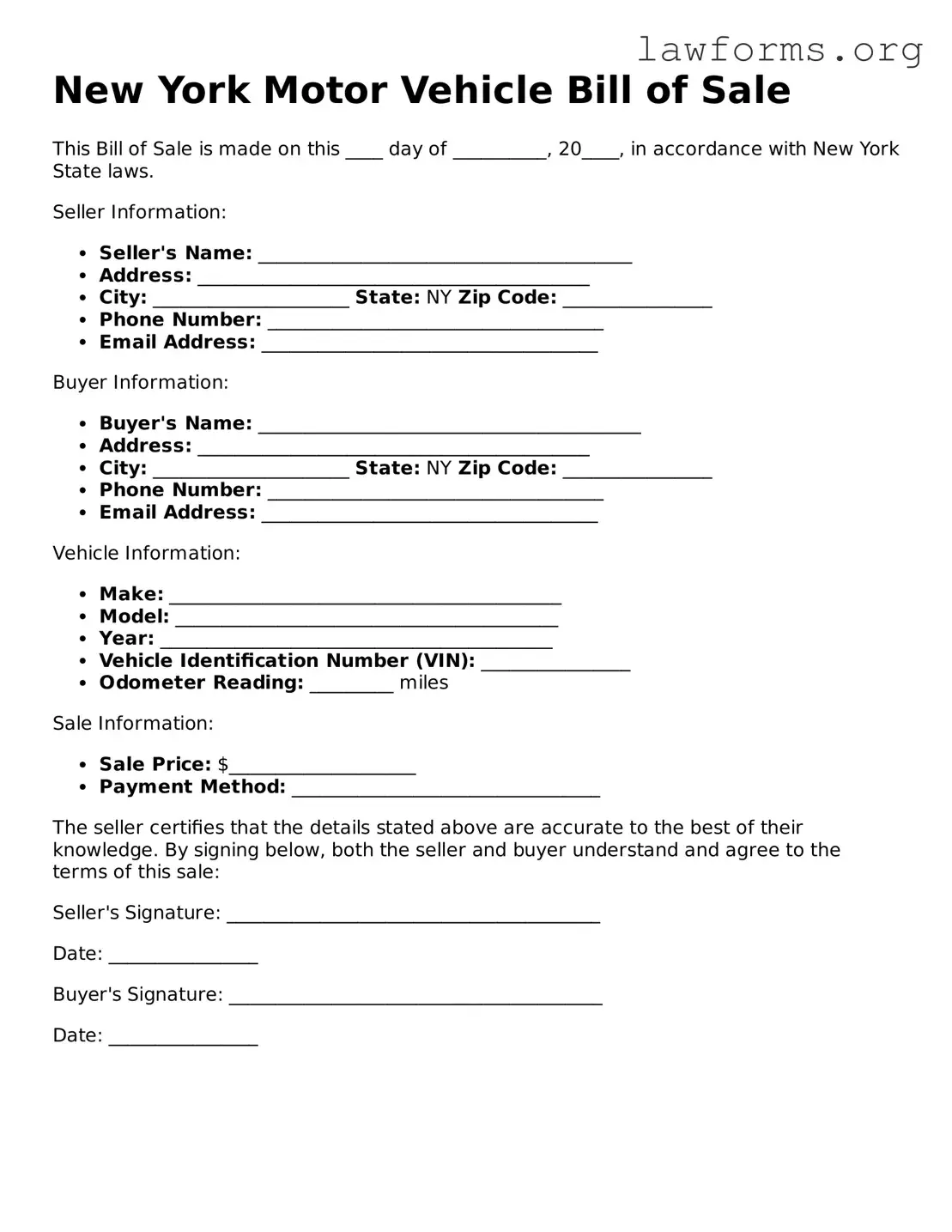New York Motor Vehicle Bill of Sale
This Bill of Sale is made on this ____ day of __________, 20____, in accordance with New York State laws.
Seller Information:
- Seller's Name: ________________________________________
- Address: __________________________________________
- City: _____________________ State: NY Zip Code: ________________
- Phone Number: ____________________________________
- Email Address: ____________________________________
Buyer Information:
- Buyer's Name: _________________________________________
- Address: __________________________________________
- City: _____________________ State: NY Zip Code: ________________
- Phone Number: ____________________________________
- Email Address: ____________________________________
Vehicle Information:
- Make: __________________________________________
- Model: _________________________________________
- Year: __________________________________________
- Vehicle Identification Number (VIN): ________________
- Odometer Reading: _________ miles
Sale Information:
- Sale Price: $____________________
- Payment Method: _________________________________
The seller certifies that the details stated above are accurate to the best of their knowledge. By signing below, both the seller and buyer understand and agree to the terms of this sale:
Seller's Signature: ________________________________________
Date: ________________
Buyer's Signature: ________________________________________
Date: ________________
